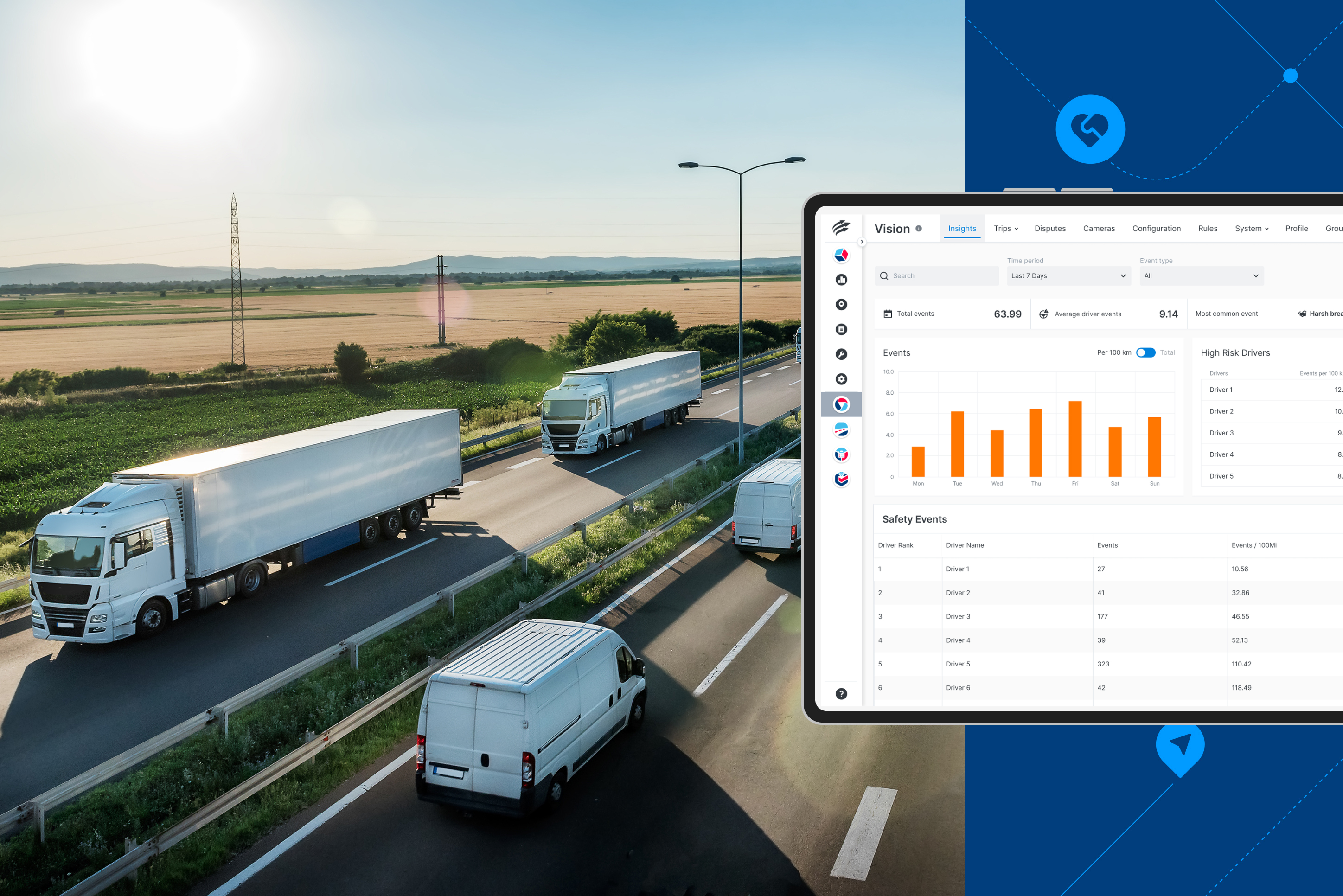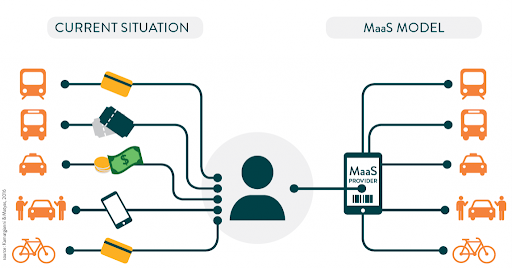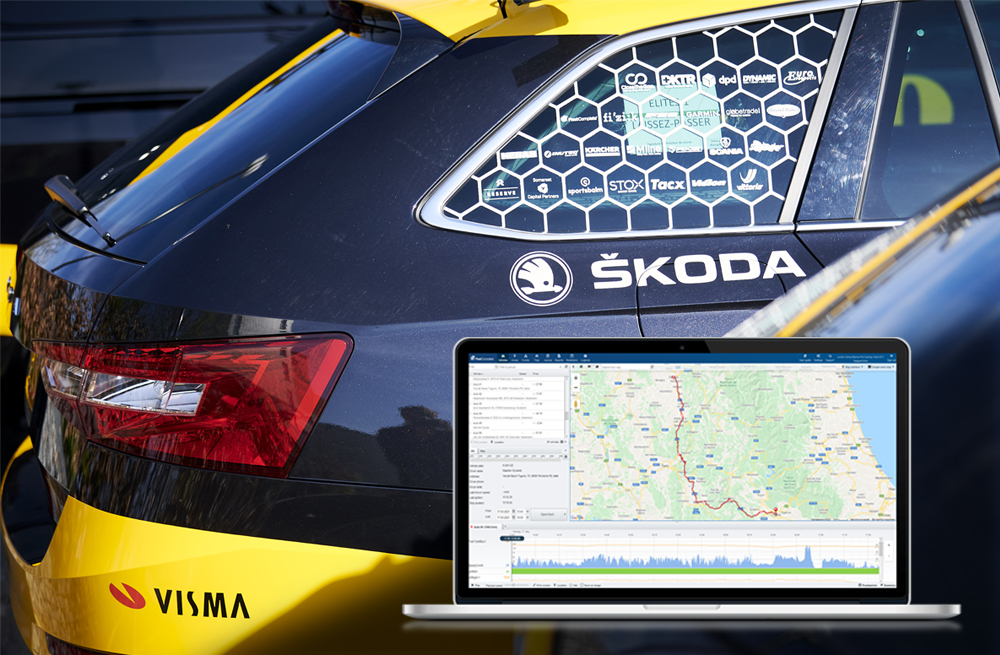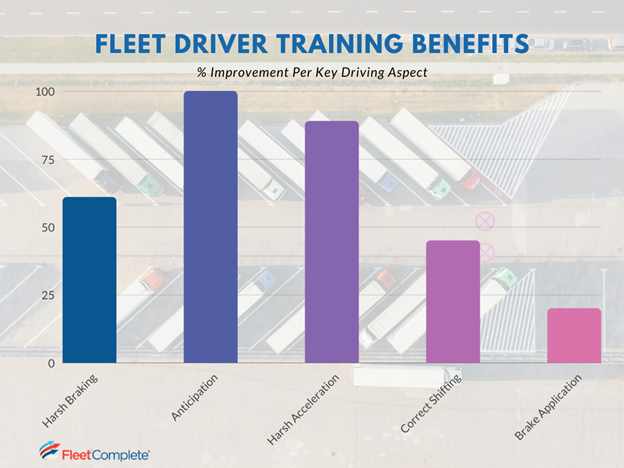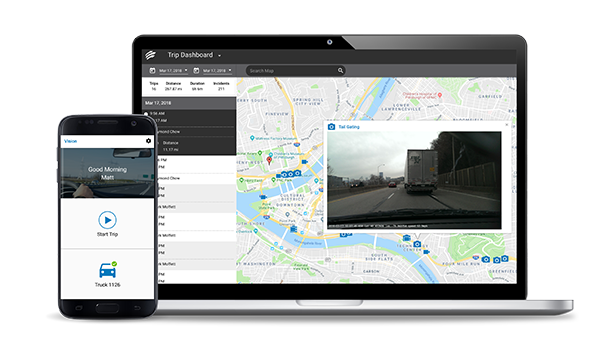Connected solutions have been revolutionizing fleet management for decades. But one solution advancing the future landscape of the industry is OEM telematics. 82% of all vehicles manufactured in 2024 have embedded telematics.
But what is OEM telematics, and why is it becoming essential for modern fleets?
We explore how OEM telematics works, its benefits, and why it’s a game-changer for fleet operators.
Understanding OEM Telematics
OEM (Original Equipment Manufacturer) telematics refers to technology solutions integrated directly into vehicles by the manufacturer. No additional hardware or devices are required, the vehicle has everything it needs to start sending and recording data.
OEM telematics gathers data by accessing the vehicle’s systems and allows you to pull data and gather real-time insights in:
- Vehicle performance
- Diagnostics
- Location
- Safety
- Driver behavior
This provides seamless data communication and tracking capabilities. In today’s data-driven fleet management landscape, OEM-embedded telematics is essential for companies aiming to maximize operational efficiency and enhance the safety of their vehicles.
OEM vs Third-Party Fleet Telematics
OEM and third-party telematics offer similar functionalities. However, there are some differences between OEM telematics and aftermarket telematics hardware which include:
OEM Telematics
OEM telematics integration occurs during vehicle manufacturing and provides seamless connectivity without additional installation. It’s more secure and reliable than aftermarket telematics due to direct integration with the vehicle’s systems.
Third-party Telematics
Aftermarket telematics systems are installed after the vehicle purchase. These systems are nice and versatile and can be customized to meet specific needs just like OEM software and hardware. However, they may require additional hardware installation and could be limited in terms of data precision compared to OEM systems.
How Does OEM Telematics Work?
OEM telematics systems typically come pre-installed within the vehicle architecture. The hardware involved in these systems consists of:
- GPS units
- Sensors
- Wireless communication modules
Through these devices, OEM telematics collects and transmits data to a central platform, enabling fleet operators to:
- Monitor Location – Gain real-time or near real-time insights into vehicle location, enhancing route planning and ensuring timely deliveries.
- Analyze Vehicle Health – Track key diagnostics like engine temperature, battery health, and fuel levels, alerting operators to maintenance needs before they escalate.
- Assess Driver Behavior – Detect hard braking, rapid acceleration, and idle time to encourage safer driving habits and fuel-efficient practices.
This data is transmitted over secure networks and displayed on dashboards accessible through desktops or mobile devices. Fleet managers can then use this actionable intelligence to create reports on their fleet’s safety and performance.
What Data is Collected in OEM Telematics?
If you’re wondering if OEM telematics is right for your fleet, here’s the wide range of data it can collect:
- Vehicle Health: Diagnostics, engine performance, fuel levels, battery status, and maintenance alerts.
- Location and Routing: Real-time or near real-time GPS tracking, route history, and geofencing data.
- Driver Behavior: Speeding, harsh braking, idling, and acceleration patterns.
- Usage Metrics: Mileage, operating hours, and fuel consumption.
- Environmental Data: Emissions levels and sustainability insights.
This information helps fleet managers improve safety, efficiency, and compliance while reducing costs.
The Benefits of OEM Telematics for Fleet Management
1. Streamlined Maintenance Scheduling
OEM telematics gives precise insights into vehicle health, ensuring timely servicing and reducing the risk of unexpected breakdowns. By monitoring metrics like oil life, engine hours, and mileage, using the engine control unit, fleet managers can automate maintenance scheduling, minimizing vehicle downtime and keeping the fleet running smoothly.
2. Enhanced Driver Safety
In 2024, 3,423 crashes involving a truck or bus resulted in a fatality. By tracking driver behavior, OEM telematics can alert managers to unsafe practices, such as speeding or harsh braking. With this information, companies can implement driver training programs, reducing accident risks and enhancing overall fleet safety. The same data can be used to determine how efficiently a vehicle is being driven.
3. Improved Operational Efficiency
Access to real-time or near real-time location data means managers can optimize routing and dispatching, helping fleets avoid traffic, reduce idle time, and make more efficient deliveries. This is particularly beneficial for industries like last-mile delivery and logistics, where timely arrival is crucial.
4. No hardware installation required
Unlike aftermarket telematics hardware, OEM telematics hardware is already installed and ready to go. Depending on the size of your fleet, this could save you thousands or millions of dollars each time you invest in new vehicles.
5. Cost Savings
The cost savings continue. Monitoring fuel usage, reducing idle time, and encouraging fuel-efficient driving habits can result in significant cost savings. OEM telematics also reduces the likelihood of costly repairs by identifying potential mechanical issues early on as they act as a vehicle diagnostics tool.
6. Sustainability
With data on fuel consumption and emissions, fleet operators can work toward more sustainable practices, which are increasingly important for meeting regulatory requirements and aligning with environmental goals.
How can OEM telematics be used in your fleet?
OEM telematics integration is beneficial to fleet managers in so many ways. Here’s just a summary of how your fleet managers can use them:
Driver Monitoring: By tracking behavior patterns, fleets can reduce accident rates and lower insurance premiums.
Regulatory Compliance: OEM telematics supports compliance with regulations such as the ELD mandate, which requires electronic logging of driver hours to ensure safe operating conditions.
Fuel Efficiency/ Sustainability: Collect real-world data that can help improve the fuel efficiency of the fleet to ensure that fuel consumption aligns with sustainability initiatives.
Vehicle Diagnostics/ Predictive Maintenance: Fleet managers can keep a watchful eye on the health of the fleet to reduce downtime.
Powerfleet (formerly Fleet Complete) OEM Telematics
Our end-to-end OEM telematics bridges the gap between vehicle manufacturers and fleet managers, creating a direct link that provides greater data accuracy and operational reliability.
This connectivity enables fleet operators to make data-driven decisions that enhance safety, efficiency, and profitability. As fleet management becomes increasingly digital and interconnected, our OEM telematics solutions for Ford, for example, serve as the foundation for an effective, sustainable, and forward-thinking Ford fleet.
As technology advances, OEM telematics will continue to evolve, offering more sophisticated data insights and enhanced integration with emerging technologies like AI and machine learning. For fleets aiming to stay competitive, Powerfleet (formerly Fleet Complete) offers cutting-edge OEM telematics data to eliminate hardware, future-proof operations, and ensure sustained success.
To find out more about OEM telematics or to discuss one of our other solutions or products, please get in touch with the Powerfleet (formerly Fleet Complete) sales team or request a demo.
Manage your fleet with Powerfleet (formerly Fleet Complete)
Running an efficient fleet is no easy task – why not alleviate some of the pressures with a reliable fleet management system? Powerfleet (formerly Fleet Complete) gives you complete control of your business fleet operations, driver, and vehicle safety and compliance to increase operational efficiency and help you keep things running smoothly. Get in touch with our team today to get started.














